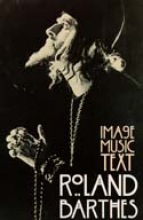Introduction
 French social and literary critic Roland Barthes is the leading structuralist thinker of the 20th Century. He draws on Saussure’s conception of semiotics: the science of the way signs behave within society. In particular, Barthes examines the arbitrariness of signs within communication systems, such as texts.
French social and literary critic Roland Barthes is the leading structuralist thinker of the 20th Century. He draws on Saussure’s conception of semiotics: the science of the way signs behave within society. In particular, Barthes examines the arbitrariness of signs within communication systems, such as texts.
When analyzing texts, Barthes makes a distinction between a traditional work and what he calls “the Text.” He argues that traditional texts (works) render the reader passive because the author has control of the narrative. Unlike the work, the Text enables the reader to actively engage in its production because it is not restricted by conventions of genre, linearity, or author control. While written text is the primary communication system that Barthes analyzes, his theories can be applied to various cultural forms such as photography, music, painting, and cultural events.
Barthes also distinguishes between readerly and writerly texts. Readerly texts, he argues, have pre-determined meaning and adhere to the status quo both in style and in content. In contrast, writerly texts have a proliferation of meaning and a disregard of narrative structure which places the reader in an active position of control.
Elements of both readerly and writerly texts can be interpreted through what Barthes calls the Five Codes. In order to reveal a text’s plural meaning, Barthes recommends breaking the master text into lexias and then determining which of the codes — hermeneutic, proairetic, semantic, symbolic, or cultural — are at work in the lexia. The five codes represent five different ways of seeing meaning in a text. They act as lenses that highlight different aspects of the narrative.









